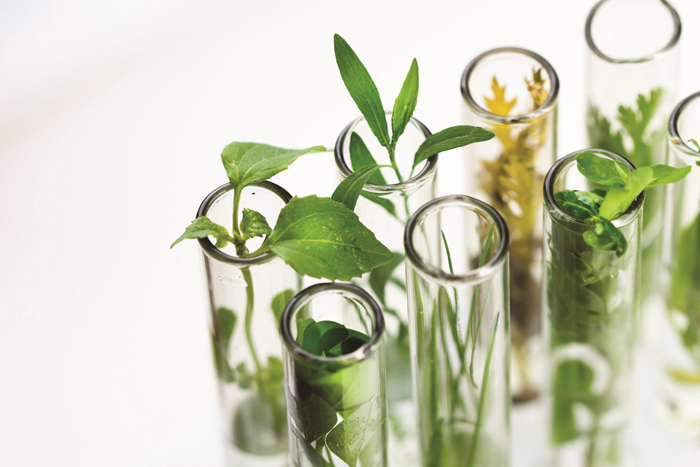According to the Food and Agriculture Organisation (FAO) of the United Nations, integrated pest management (IPM) is the careful consideration of all available pest control techniques and subsequent integration of appropriate measures that discourage pest populations.
It combines biological, chemical, physical and crop-specific management strategies and practices to grow healthy crops, reducing the use and dependence on chemical pesticides. Semiochemicals are one such tool that can be used as part of an integrated approach to manage pest species, specifically insect pests.
Semiochemicals are substances or mixtures of substances, emitted by plants, animals, and other organisms, that evoke a behavioural or physiological response in individuals of the same or other species. Semiochemicals are divided into interspecific and intraspecific interactions, with the former mediating interactions between individuals of different species (allelochemicals), and the latter used for communication between individuals of the same species (pheromones).

Photo: counterpart-sermiochemicals.com
Allelochemicals can be further subdivided depending on the function of the chemical and the response it evokes in the recipient organism, and/or the organism emitting the chemical. Examples of allelochemicals include a flower emitting volatile organic compounds (VOCs) that attract pollinators, or the VOCs used by herbivorous insects to locate suitable host plants for feeding or oviposition.
Similarly, there are different types of pheromones mediating interactions between individuals of the same species. These are specifically important in the case of social insects with exceptionally intricate communication systems. Examples of pheromones include aggregation pheromones to attract individuals of both sexes at food and reproductive habitats, or trail pheromones that guide social insects to distant food sources, as can be seen with many ant species. The most commonly known pheromones, and also mostly used for pest monitoring and control in agriculture, are sex pheromones. These pheromones mediate interactions between sexes of the same species and are mainly produced by females to attract males for reproduction.
So how can allelochemicals and pheromones be used to manage pests? If a chemical evokes a predictable response in a target insect, the chemical can be used to manipulate the insect accordingly. For example, in the case of attractants, the insect can be lured to a trap or insecticide where it is captured or killed and removed from the population, supressing the pest population. Below are a few examples of semiochemical-based strategies used in agriculture:
Monitoring
Usually, a trap and lure are used together with a sticky card or insecticide. The insect is lured to the trap where it is killed. These traps are serviced regularly to monitor the presence of the target insect as well as fluctuations in population density. This data can be used to optimise the implementation of other control measures such as chemical sprays.
Mass trapping
Mass trapping works on the same principle as monitoring. However, this strategy is density-dependent and requires more traps to be placed in the field in comparison to monitoring, achieving mass trapping of the target insect.
Mating disruption
Mating disruption makes use of sex pheromones specifically. With this strategy, large quantities of synthetic pheromone are released into the atmosphere to effectively saturate the atmosphere. Consequently, males are not able to locate the pheromone trails of females, resulting in fewer mating events and thus decreasing population pressure over time.
Attract and kill
A lure is used together with an insecticide. The insecticide and semiochemical can be blended together in a ready-to-use formulation, or could be sold separately and mixed before application. The insect is lured to the formulation containing the attractant and killed on contact by the insecticide.
Advantages and disadvantages
As with any pest management strategy, the use of semiochemicals poses both advantages and disadvantages.
- Pheromones are species specific, and associated products can only be used in the management of one species. This could be advantageous by having minimal impact on non-target species, but also means that additional control measures will need to be implemented to control other pest species.
- The use of semiochemicals is not an effective strategy against all pest species, as not all insects use olfactory cues to a significant extent. The threshold values of different pests should also be taken into consideration – for pests with a very low threshold value, semiochemical-based strategies might not be effective.
- These products are usually much slower acting than insecticides, and do not provide a quick knockdown effect of the population. However, there could be a cumulative effectiveness over multiple generations of use.
- Most semiochemical-based strategies do not result in chemical residues and have no re-entry interval after application.
- Because semiochemicals are volatile, products containing semiochemicals often require cold storage to prevent the volatile compounds from dissipating. Dissipation of the semiochemical reduces the shelf life of the remedy.
- In general, sex pheromones only attract males of the species, and therefore strategies using these chemicals mainly monitor or control males.
In South Africa, semiochemical-based products fall under the definition of an agricultural remedy as defined in the Fertilizer, Farm Feeds, Agricultural Remedies and Stock Remedies Act (Act 36 of 1947) and must be registered by the Department of Agriculture, Land Reform and Rural Development. These remedies are assigned an “L” registration number, similar to pesticides, and may only be sold and used in South Africa when registered. Regulation ensures that the remedies sold to farmers have been tested rigorously and are safe and effective.



























